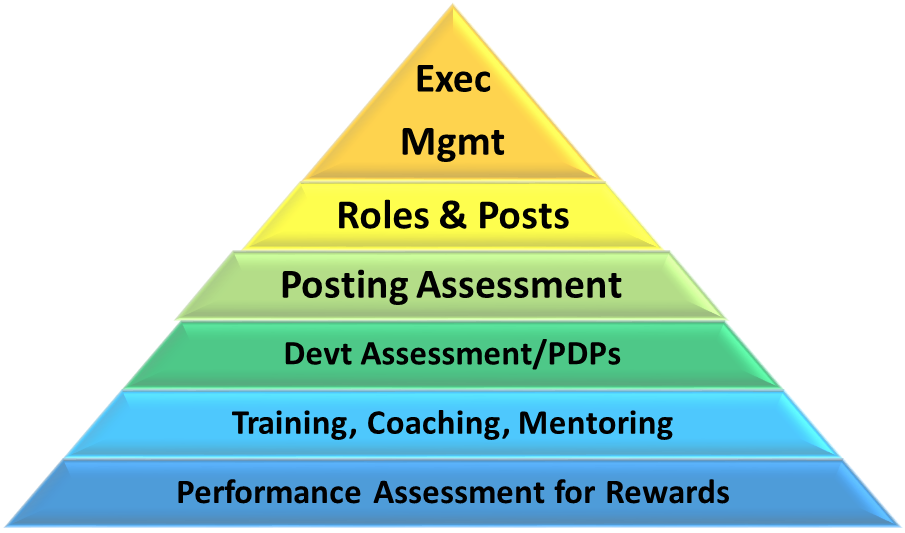 International and personal research and experience shows that the salient inhibitor in achieving success by the majority of private and public companies and NGOs is the ineffectiveness and inefficiency of many line managers at all levels. This omnipresent weakness must be attributed to practically all attributes and processes pertaining to Executive/Line Management as a function, or modus operandi, and Executive/Line Managing processes. These can be grouped and dealt with as: (1) Executive/Line Manager Job/Post Management: role and post definition, candidate assessment for recruitment or promotion, assessment/evaluation and personal development planning, training, coaching and mentoring and reward structure and definition (see below), (2) Executive Corporate Management Processes and (3) Managing Processes.
International and personal research and experience shows that the salient inhibitor in achieving success by the majority of private and public companies and NGOs is the ineffectiveness and inefficiency of many line managers at all levels. This omnipresent weakness must be attributed to practically all attributes and processes pertaining to Executive/Line Management as a function, or modus operandi, and Executive/Line Managing processes. These can be grouped and dealt with as: (1) Executive/Line Manager Job/Post Management: role and post definition, candidate assessment for recruitment or promotion, assessment/evaluation and personal development planning, training, coaching and mentoring and reward structure and definition (see below), (2) Executive Corporate Management Processes and (3) Managing Processes.
Roles and posts must be defined based on process definition and balanced RAEW, i.e., Responsibility, Authority, Expertise and Work levels. Requisite competences and competencies for each post must also be defined based on the requirements for productive execution of the processes to be allocated to the role(s) making up each post.
Assessment for recruitment and promotion must be based on the competences and competencies demanded by the specific post to be filled. It should be done using the most modern assessment methods and tools by experts in the respective fields and by the capability and willingness of the candidates to implement them.
Performance assessment/evaluation must be carried out periodically and personal development plans formulated and executed aiming at bridging identified gaps. Personal development training must comprise in-class, on-personal-time and on-the-job training as well as coaching and mentoring, especially for bridging gaps in soft competencies. It should be carried out by mixed teams comprising line managers and assessment centre experts and should complement a 360 degree evaluation.
Gaps between requisite competences and competencies, as identified by periodical assessment and critical incident reviews, must be bridged by formal and/or informal training and/or coaching and/or mentoring depending on their nature. Such training should be defined by immediate line management assisted by Personnel Dept. staff and/or specialists and agreed upon with the incumbent. It should be carried out under the responsibility of line management and its outcome reviewed during subsequent periodical assessment.
Performance measures are defined in the context of process management (be it during business process re-engineering or improvement projects) and/or during periodical performance evaluation or even during performance-based reward reviews. Specific targets should be set during periodical business planning and actual results reviewed and agreed upon with the responsible incumbents (line managers and process owners). Results should be reviewed periodically in a systematic way and targets revised.
Personnel emoluments must be defined in a systematic way and comprise a combination of fixed and performance-based variable elements. Reward structures should be based on corporate values and performance measures and should aim at improving corporate results on both a short and long term base and on personal development.


